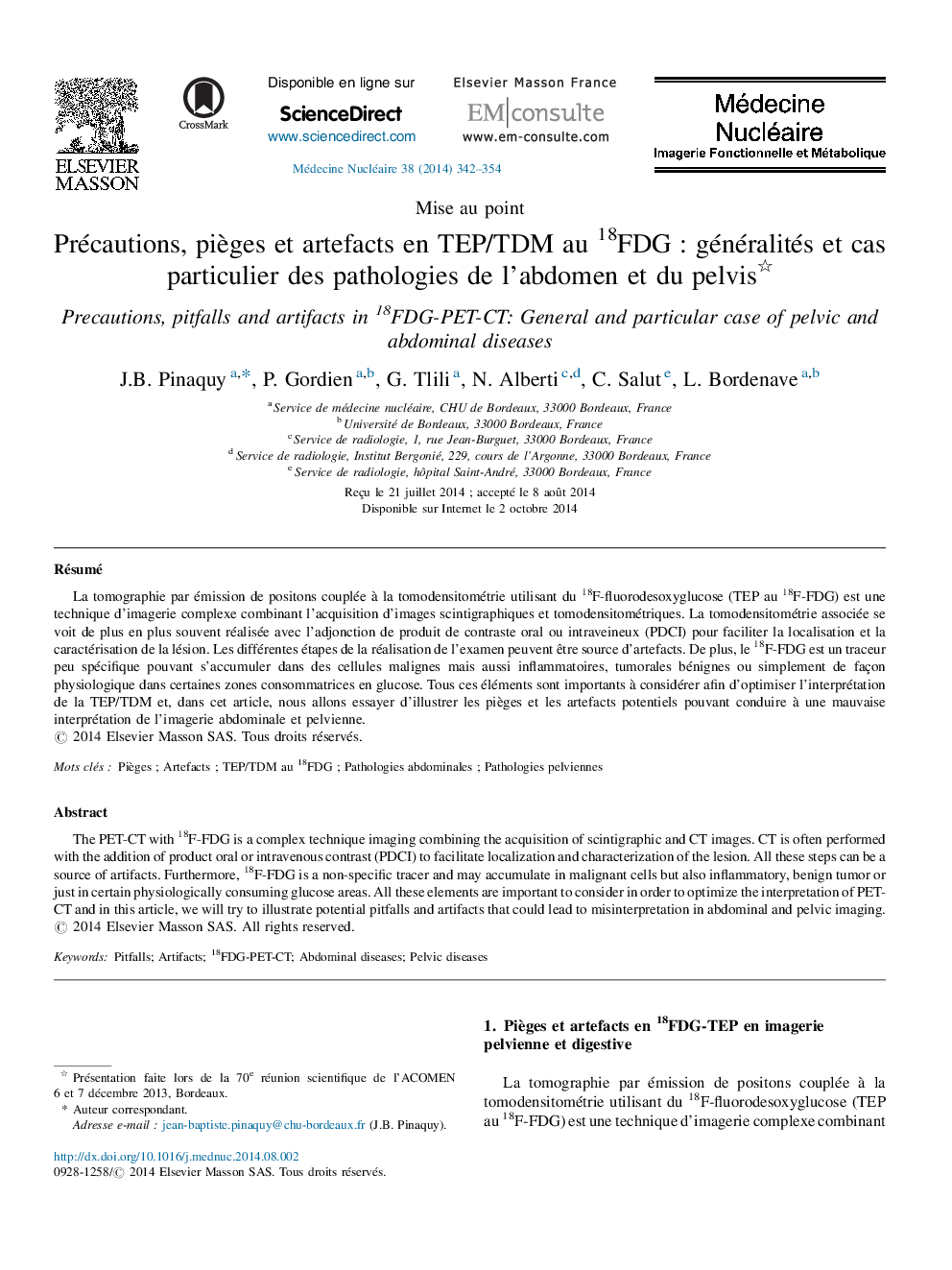| Article ID | Journal | Published Year | Pages | File Type |
|---|---|---|---|---|
| 4243658 | Médecine Nucléaire | 2014 | 13 Pages |
RésuméLa tomographie par émission de positons couplée à la tomodensitométrie utilisant du 18F-fluorodesoxyglucose (TEP au 18F-FDG) est une technique d’imagerie complexe combinant l’acquisition d’images scintigraphiques et tomodensitométriques. La tomodensitométrie associée se voit de plus en plus souvent réalisée avec l’adjonction de produit de contraste oral ou intraveineux (PDCI) pour faciliter la localisation et la caractérisation de la lésion. Les différentes étapes de la réalisation de l’examen peuvent être source d’artefacts. De plus, le 18F-FDG est un traceur peu spécifique pouvant s’accumuler dans des cellules malignes mais aussi inflammatoires, tumorales bénignes ou simplement de façon physiologique dans certaines zones consommatrices en glucose. Tous ces éléments sont importants à considérer afin d’optimiser l’interprétation de la TEP/TDM et, dans cet article, nous allons essayer d’illustrer les pièges et les artefacts potentiels pouvant conduire à une mauvaise interprétation de l’imagerie abdominale et pelvienne.
The PET-CT with 18F-FDG is a complex technique imaging combining the acquisition of scintigraphic and CT images. CT is often performed with the addition of product oral or intravenous contrast (PDCI) to facilitate localization and characterization of the lesion. All these steps can be a source of artifacts. Furthermore, 18F-FDG is a non-specific tracer and may accumulate in malignant cells but also inflammatory, benign tumor or just in certain physiologically consuming glucose areas. All these elements are important to consider in order to optimize the interpretation of PET-CT and in this article, we will try to illustrate potential pitfalls and artifacts that could lead to misinterpretation in abdominal and pelvic imaging.
